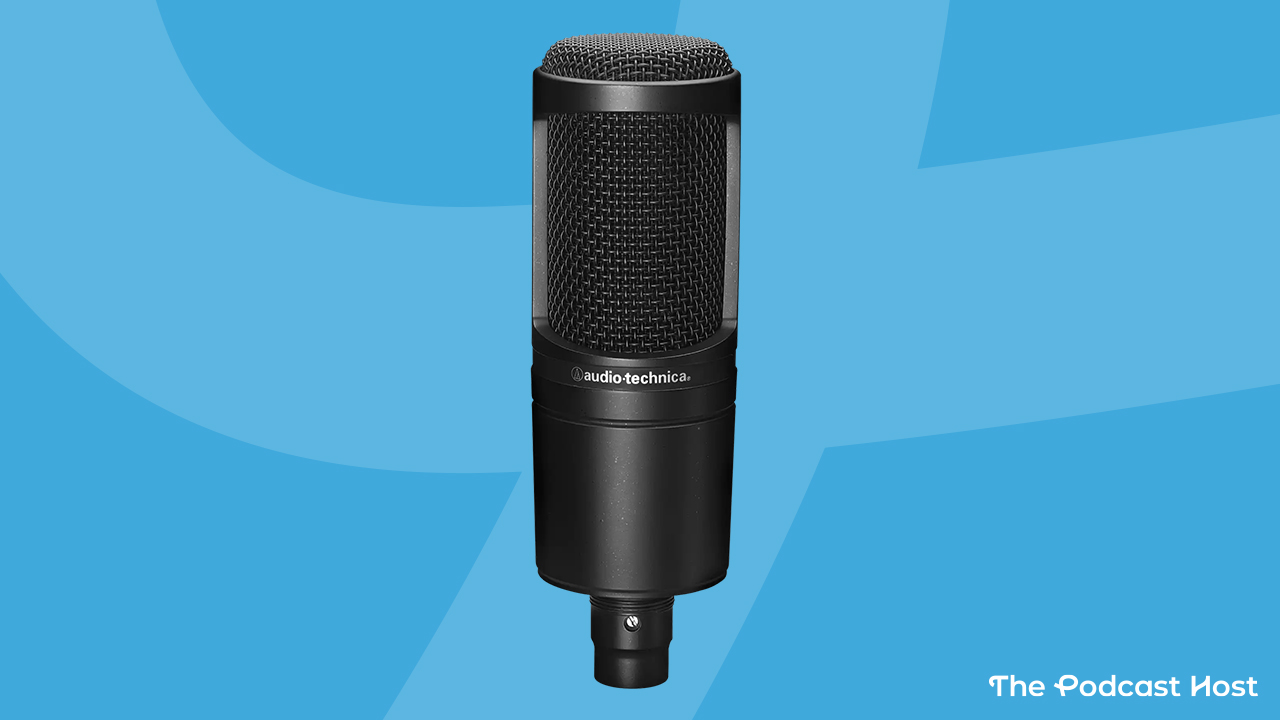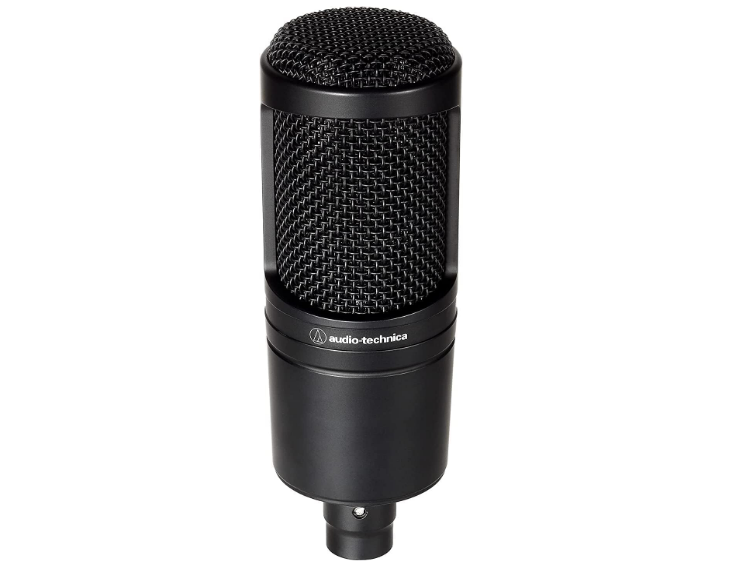Audio-Technica 2020 Review: Vibrant Vocals for Under $100

It’s fair to say that the number “2020” isn’t one that drums up positive emotions for many people. Unless, maybe, you’ve just finished getting your eyes tested. In any case, the Audio-Technica 2020 long predates that miserable year, having been released way back in 2004.
Now, I’ve never been very good at maths, but, having consulted my calender at time of writing, I make that 20 years ago.
So, two decades on, does the AT-2020 still hold up as a quality vocal mic option? Let’s find out…
Our link to the AT-2020 is an affiliate, meaning we may earn a commission should you buy through it. Fear not, though – affiliates never cloud our judgement and we always review fairly.

What is the Audio-Technica 2020?
The model I’m reviewing is a Cardioid condenser studio XLR mic. There is a USB version available, too, though I’ve never tried it. Based on my experience of how these things tend to work, it’ll probably be quite similar but with a different cable.
The “Cardioid” part is what’s known as a polar pattern, and means it should be used by one person. Don’t worry; you can still share it, just not at the same time.
Why Use a Condenser Mic?
Mics tend to be built and to work in two ways – dynamic or condenser.
I need to make some sweeping generalisations to write this part succinctly, so here they are:
- Condenser mics are better at accurately recording the nuances of a vocal performance.
- They pick up more detail – though that can be a downside if you have poor mic technique or record in suboptimal environments.
- They’re the go-to choice of singers and voice actors.
Dynamic mics are typically more durable in their build, as well as more forgiving in poor-sounding rooms.
Ultimately, there’s no right or wrong answer over which kind of mic is “best”. Judge them on a case-by-case basis (which is literally what you’re doing, given you’re reading this AT-2020 review – well done!).
What Will I Need to Use the AT-2020?
Condenser mics are powered by Phantom Power, also known by its less glamorous name, 48v. You don’t need to know anything other than that, but if you’d like to, I’ve linked to Sarah’s handy guide on this mysterious force.
XLR mics can’t plug directly into your computer so you’ll need a digital recorder, audio interface, or mixer. Some of these come in USB form, so you can record into your computer with the AT-2020 – just not without an additional device.
Whatever additional device you choose, it’ll need to have a Phantom Power/48v button on it. The good news is, most do.
You’ll also need an XLR cable and a boom arm or mic stand to use the Audio-Technica 2020. If you’re already worried about this shopping list growing at an alarming rate, let’s switch gears and talk money.
Cost of the Audio-Technica 2020
On its own, you’ll get an AT-2020 for $99.
Its USB alternative (cleverly named the Audio-Technica AT2020USB+) is available at the same price – $99.
You can get an AT-2020 Streaming/Podcasting Pack for less than $150. This gives you a boom arm and over-ear headphones, though it still leaves you shy of an XLR cable and an audio interface.
The USB version comes with its own wee desk stand, so you’d be pretty much set up and ready to go if you opted for that. Again, though, I’m not reviewing the USB model, so I can’t vouch for it.
There’s a Streaming/Podcasting Pack for the USB version, too, meaning you can grab the mic, boom arm, and over-ear headphones for under $130.
So, now that you know how much the Audio-Technica 2020 will cost you, another essential factor is how it sounds…
Recording With the AT-2020
It took me a second to realise which part of the mic I should be talking into. Then, I spotted the word “back” written on the back of the mic. Showing the type of initiative that enables me to get paid for these reviews, I deduced that the opposite of the back would be the front. I tried it, and it was.
Speaking capably into the front of the mic, I recorded my sound sample into the Maono PS22 USB audio interface (review on the way!).
This wasn’t recorded in proper studio conditions or anything, just a pretty standard office. I applied no post-processing to the recording, either. What you hear is what was recorded.
Overall, I’m impressed by the quality of the mic. I think it sounds great, especially given its modest price point.
I did need to walk the line a wee bit between being too close and popping the mic and being too far away that it started to sound more “roomy”. This is a fairly typical dance with almost any vocal microphone, though.
Audio Technica 2020 Alternatives
There are an incredible number of quality podcasting mics on the market these days, and you’ll find our picks and top-level thoughts in our best podcast microphones roundup.
If I had to pick another microphone that was similar to the AT-2020 in terms of function, build, and price, though, it would probably be the MXL990. The 990 is another excellent vocal mic, and you can learn more about it in Colin’s (rather ancient) review.
I don’t have one handy to do a head-to-head because our old studio used to get so cold that the MXL990 tragically passed away one hard winter. As I say, condenser mics can be fragile souls, so treat them with care.
Audio Technica-2020 Review: Conclusion
An enthusiastic and positive takeaway is that this is a brilliant vocal microphone for less than $100.
But of course, there are caveats:
- Remember you’ll need additional equipment such as an audio interface, mixer, or digital recorder.
- A USB cable and a boom arm or mic stand, too.
- This mic is more suited to permanent setups, so consider alternatives if you travel a lot or record on the go.
I wouldn’t say you need a perfect environment to use the AT-2020. My sound samples certainly weren’t recorded in a pro studio. That’s not to say you’ll get away with abysmal conditions and poor mich technique, though, so always do your best to give your recordings a fair chance of sounding professional.
And now to the bit where I hold a scorecard up and you clap (don’t worry, you don’t need to clap)…
Our Rating: 4.8/5
- Price Point: 5/5
- Sound Quality: 5/5
- Ease of Setup: 3/5
- Overall 4/5

